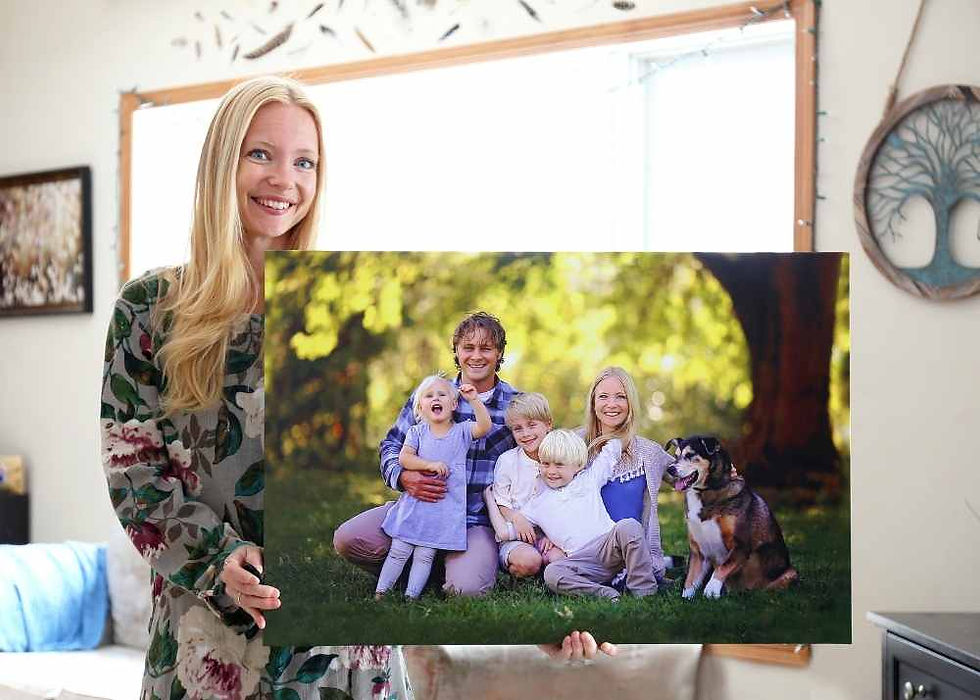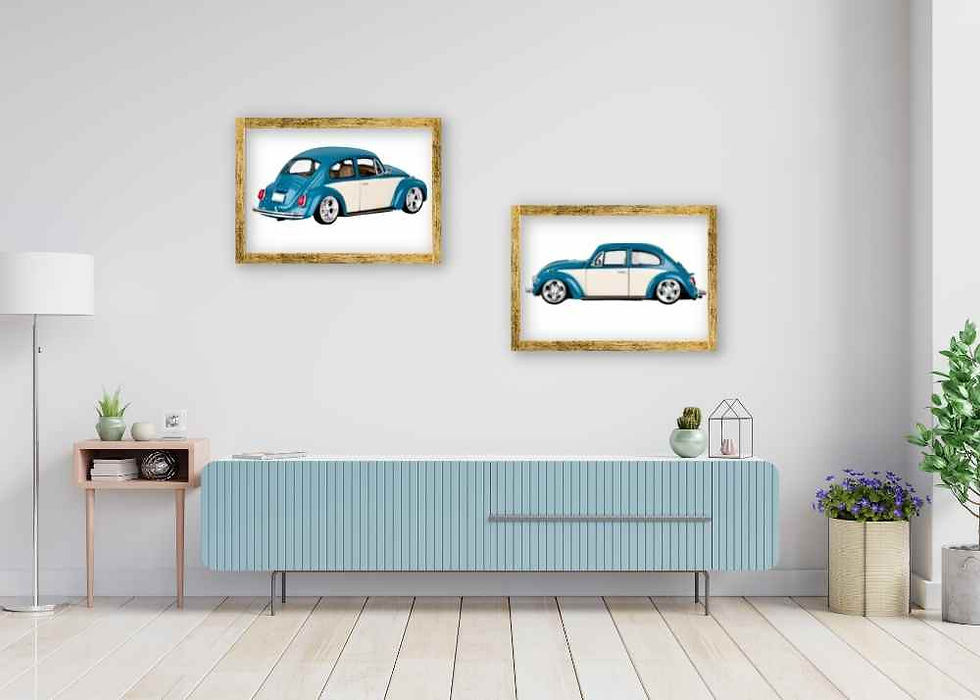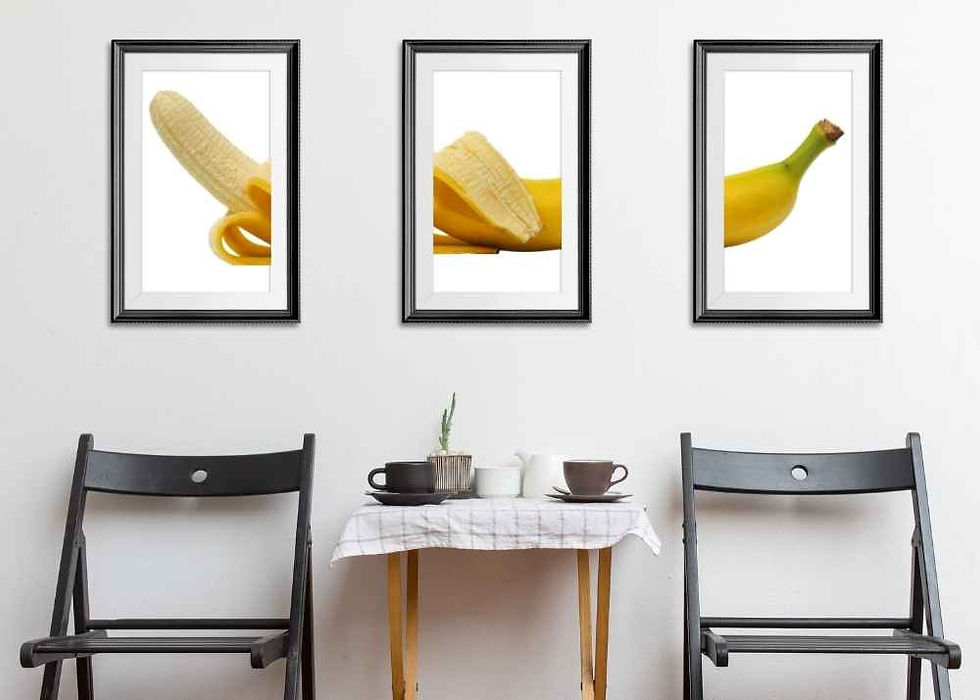
Canvas Photo Prints Explained - A Complete Guide
There’s quite a few different options of print mediums when it comes to printing your photographs.
There’s also a larger range of wall art prints available through stores or online, offering images & artwork on various materials & print mediums.
With all these amazing styles on offer, canvas prints are still a fabulous choice.
So what is a canvas print? Canvas describes a material made by weaving fabrics & fibres together. An image can then be printed to this material, usually via an inkjet printer, thus creating a canvas print. Unlike a canvas painting, where an artist will apply paints via brushes & other techniques, to create the artwork. Canvas prints can then be stretched, mounted or rolled & framed ready for display.
A Brief History Of Canvas Prints
Canvas has been with us since the 16th century & the term comes from the word “cannabis”, as originally it was made from hemp.
Back in those days it was a lot thicker & heavier & as well as being used for making ship’s sails, artists started to use the material for creating paintings.
As early as 1840, photographers were able to transfer an image onto canvas, but it wasn’t until the 1970’s when the inkjet printer came along, that the canvas printing we know today started to develop.
Now in our digital age & with advanced printing technologies, the canvas print is a high quality & popular product.
Will Your Photo Look Good Printed On Canvas?
Absolutely, but like printing to any medium, you need a good quality image to begin with.
These days, even photos taken on smart phones produce pretty impressive quality.
How big you're able to print the image needs consideration also, as a lesser resolution image will only hold up to being printed to a certain size.
The print service you use will be able to advise you on the optimal size for your photograph.
Because canvas has a texture, it can really suit certain styles of images & possibly not suit others.
Landscapes are a wonderful example.
I feel the slight texture of canvas enhances certain landscape shots.
Portraits can also benefit from being printed to canvas as it helps to slightly soften the image.
But if you need to reproduce an image with absolute sharpness & optimal detail, then a photographic paper, metal or acrylic print may be the better choice.
But this isn't to say canvas prints offer a lesser quality, they just bring a different feel or character to an image.
Why Are Canvas Prints So Popular?
Canvas prints are one of my favourite ways to print & display photographs.
The reasons why I love this medium are probably the same for other people too.
As well as purchasing premade artwork, canvas is a super affordable way to display your photographs.
These can be family & holiday snapshots as well as professional portraiture & landscape images.
Many sizes are available, from smaller prints that can be used creatively to make wonderful wall displays & gallery walls, to supersized prints that can really make a statement & focal point in a space.
Camera & print technology has come such a long way too, that I’ve seen amazing canvas prints made from photographs taken with a phone!
But the quality of digital cameras is amazing, so pair that with a professional inkjet printer & modern inks & you end up with a wonderfully high resolution image on canvas that looks fabulous with any décor.
So What Exactly Is Canvas?
Canvas isn’t so much a fabric in & of itself, but is made from various materials that are blended & weaved together to create a canvas.
Just as certain furniture fabrics, or jeans for example, are made from canvas, it’s a different canvas to that which is used for photographic printing.
The canvas for clothing & commercial applications is also made using a twill weave, whereas canvas prints use a plain weave.
Types Of Canvas Used For Photographic Prints
The canvas used for creating photo prints needs to be of a certain quality & texture in order to be able to lay down the printing inks.
There’s 3 Types Of Canvas Used For Producing Prints -
1. Cotton or Linen - more expensive, but is used for creating archival prints, & many photographers choose this style of canvas for fine art images & limited edition print runs.
Being a completely natural fibre, the inks soak in rather than laying on the surface, which does create more subtle colours, but because of this, the inks are less prone to fading.
Being a natural fibre also means consistency between batches is harder to achieve, hence why it’s often used for limited print runs.
These prints can have a more painterly look, but that will also depend on how course or fine the weave.
2. Polyester - it’s the cheapest canvas to produce, but that doesn’t necessarily make it inferior.
Being synthetic means it has a smoother surface, great for retaining sharpness & finer details.
Because the inks sit on the surface rather than soaking in, colours are more vibrant with more contrast.
Perfect for those images that rely on a bit of impact, as polyester can make a photograph pop.
Print consistency isn’t an issue, so ideal for long print runs.
3. Poly/Cotton Blend - normally 60% polyester to 40% cotton, it’s the canvas of choice for many print labs.
It sits in that nice comfort zone, where colours can be reproduced accurately, details are still retained & consistent print runs can be achieved.
Which Type Of Canvas Is Best For Your Photo?
This will depend on your needs & even your budget.
Archival cotton or linen is costlier, so it may be a waste of money on a photograph that may not be of a high quality.
Although in saying that, you might have family photos that you want to last for many decades.
Certain images don’t always suit maximum sharpness & overly vibrant colours, such as portraiture & muted landscape shots.
In which case a cotton or linen blend may be the perfect fit.
For a really colourful photograph that you want to create maximum impact, a pure polyester canvas will really help the colours to pop & stay sharp even as you go up in size.
Of course, the original image needs to be sharp & of high resolution to begin with.
For most photographs, whether snapshots or taken with a high end camera, a poly/cotton blend can be the canvas of choice.
Many professional photographers sell their work printed to a poly/cotton blend canvas, as it delivers great quality & consistency print after print.
How Canvas Photo Prints Are Made
Once a certain canvas has been chosen, the image is printed via an inkjet printer.
The inks are then laid down in dots.
Different inks can be used, many nowadays with UV protecting qualities.
Image to print resolution is a whole topic in itself.
The resolution & pixels of the camera, how the image file is saved & the format it’s exported to the print lab all affect the final print.
But for the sake of writing a few hundred words, if you have a good camera, be it DSLR or camera phone, your print lab will guide you as to what they require to get the optimal result.
Once the canvas is printed, it can be finished in 3 ways -
1. Gallery Wrap
Probably the most popular way to display a print, the canvas is stretched over a wood frame (called stretcher bars) & fixed to the back, usually by staples.
The image can either bleed around the edges, alternatively white or black edges are other options.
These prints are lightweight & ready to hang.
They don’t require framing, although this can be achieved with a floating frame (see chapter on framing).
2. Stretched or Studio Wrap
Like a gallery wrap, the print is stretched over a wood frame, but affixed with staples to the edges instead of out of sight on the back.
The frame is also thinner & these types of prints need framing before being displayed.
You would produce a print like this if you’re using a custom framer, as the staples would be visible in a floating frame.
3. Rolled Canvas
As the name implies, the canvas print is simply rolled & inserted into a protective tube.
Many artists sell their work this way as they’re easy to ship & the customer is able to organise their own custom framing.
But a rolled canvas will need to be mounted before it can be framed, although it’s possible to stretch a rolled canvas.
Related Articles:
Framing Options For Your Canvas Print
Most print labs will offer a choice of frames when you order your print.
Floating Frames
The most popular of these are floating, or floater frames.
The canvas wrap is mounted so there's a gap all the way around between the frame & the print, thus appearing to “float”.
Although canvas wraps look great as is, floating frames offer a very clean, modern & contemporary look.
Related Article:
Custom Frames
You can still custom frame a gallery wrap & like a studio wrap, the frame can sit flush to the print.
Once a rolled print is mounted, as it’s thinner than a wrap, any standard picture frame can be used.
Box Frames
These styles of frames are deeper, & the print is inserted from the back & sits flush against a lip at the front.
They don’t always need to be hung on the wall, as depending on the depth of the frame they can stand up by themselves.
Perfect for displaying on a table, shelf or any other nook around the house.
To learn more about these frames & how you can use them creatively, please check out my article: 6 Reasons For Using Box Style Picture Frames
How To Hang Your Canvas Print
Nothing could be simpler.
An unframed canvas wrap, even large sizes, are relatively lightweight, & if you’ve ordered your canvas wrap through a printing service, or even from an artist, the appropriate hanging hardware will be supplied.
With a wrap, a string or wire is usually attached to the back of the frame in order to simply hang from a nail or hook.
Other picture hanging hardware can also be used.
Sometimes D rings & other style brackets can be attached to the frame.
This is also true for floating, custom & regular picture frames.
The appropriate hardware will be supplied to suit the size & weight of the frame.
How Long Do Canvas Prints Last?
A quality print using archival canvas, UV resistant inks & a protective top coat, kept in optimal conditions, can last 75 years plus.
But not all canvas prints are made to these standards, as archival canvas is significantly more expensive.
Also, your print will be proudly displayed on the wall, not kept in a dark, temperature controlled room.
That being said, a canvas print from a reputable printer will still last decades if looked after properly.
The main reason for any print’s life to be shortened are the inks fading due to exposure to sunlight & other environmental contaminants.
There’s 2 Types Of Inks Used For Printing To Canvas Which Are:
1. Dye-Based - generally considered to be less fade resistant, they are made by using a colourant dissolved in liquid.
This also makes them less moisture resistant, but these inks do create more vibrant colours.
2. Pigment Inks - used for archival printing, they consist of microscopic specks of solid colour suspended in liquid.
Although not as vibrant, they are more resistant to fading.
Although pigment inks may be considered archival, most reputable printers use dye-based inks that are infused with UV & fade resistant properties.
Good quality prints will also have a protective top coat applied that not only offers an extra level of sun protection, it seals the inks from airbourne contaminants & pollutants.
The production of inks these days has come a long way.
As for one being superior than the other, they both offer their own unique properties.
How To Take Care Of Your Print
Canvas prints are meant to be displayed for everyone to see & enjoy.
Simple Precautions For Keeping Your Print In Optimal Condition.
Just make sure your print isn’t exposed to direct sunlight, even with UV protection, it’s not immune to fading over time.
To learn how you can protect your print from UV damage, check out: Do Canvas Prints Fade?
Although with some extra treatment, canvas can be hung in high moisture environments, it’s not usually the best environment for them.
But if you'd really like your canvas print displayed in the bathroom, check out : Should You Hang Canvas Prints In The Bathroom? , as it covers ways to safely display & protect canvas prints against humidity.
Related Article:
Avoid areas where there can be a build-up of grease or smoke.
Nicotine can build up over time as well, & although it’s possible to clean canvas, it’s better to avoid in the 1st place.
Related Article:
Single & Multi-Panel Prints
Single prints are available in a wide range of sizes.
From smaller prints that can sit on a shelf, or be used in creating a collage or gallery wall, to supersizes that are fantastic for making a statement & focal point in a room.
Canvas prints can also be printed in various formats from square to landscape & panoramic.

Multi-panel prints, sometimes known as split panel prints, can be used to great effect.
They can be one image split into a number of different panels, but each panel can also be an individual size.
This allows for many different combinations & shapes they can be arranged in.

Budget Canvas Prints - Are They Worth It?
There’s many companies offering cheap canvas printing, but is it worth it?
To be honest, I’ve never used a budget printer, but I have seen some of the issues people can have.
This can be a flimsy frame or stretcher bars, so over time the print can buckle or warp.
The canvas not being stretched correctly, so the print isn’t as taut as it should be.
Inferior inks & printing process, so you’re not getting true colours or definition in the image.
Overall, just a shabby product.
You usually get what you pay for, so if it’s a photograph worth printing, it’s worth doing it well.
But if a cheaper print service gets good reviews, or you’ve seen examples of their work, then why not save some coin & give them a try.
Sometimes premade prints can be on sale at wall art shops & department stores.
At least you can view the print quality & physically assess the workmanship before buying.
Related Article:
Final Thoughts
When it comes to bang for your buck, canvas prints are a winner.
This is why they are just as popular today, if not more so, than ever before.
It’s an easy process too, from taking the photograph & sending the image file to the printers, to receiving the finished product delivered to your door.
It can all be done from the comfort of your own home.
I hope you found this guide to canvas prints helpful & please share if you feel it could be of value to someone else .. remember .. sharing is caring!





























If you need money to buy it, you can try gambling. Finding good games that pay is tough and basantclub login looks promising—it’s a gaming app from Pakistan with a modern vibe. Fresh games, cool twists on old ones, and the chance to make money? Sounds like a dream. I’m thinking about trying it myself.